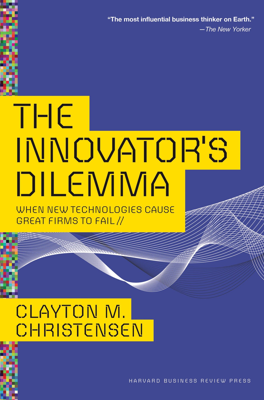Value Networks and the Impetus to Innovate
Organizational and Managerial Explanations of Failure
Organizational Impediments: Bureaucracy, complacency, and risk aversion can obstruct innovation. Specific structures that support component-level innovations may hinder architectural changes.
Example: Tracy Kidder's "The Soul of a New Machine" describes how Digital’s organizational structure was evident in its product designs, hindering architectural innovations.
Capabilities and Radical Technology as an Explanation
Radical vs. Incremental Innovations: Established firms excel at incremental innovations, while new entrants are better at radical innovations, often transferring technologies from one industry to another.
Research Findings: Studies show firms triumph when new technologies enhance their existing competencies but fail when new technologies make their skills obsolete.
Value Networks and a New Perspective on the Drivers of Failure
Definition: A value network is the context within which a firm identifies and responds to customers' needs and strives for profit.
Impact on Firms: The expected economic rewards within a value network drive resource allocation toward sustaining innovations, explaining why established firms often excel in sustaining technologies but struggle with disruptive ones.
Value Networks Mirror Product Architecture
Nested Systems: Products are part of nested systems of use, creating corresponding nested networks of producers and markets.
Example: 1980s management information systems involved mainframes, peripherals, and components, creating complex value networks.
Metrics of Value
- Differing Measures: Value is measured differently across networks. For example, mainframe markets value capacity, speed, and reliability, while portable computing markets value ruggedness, low power consumption, and size reduction.
Cost Structures and Value Networks
Unique Cost Structures: Each value network has specific cost structures, influencing which innovations are profitable.
Gross Margins: Different value networks, like mainframes and portable computers, have varying gross margin requirements, affecting firms' resource allocation decisions.
Technology S-Curves and Value Networks
S-Curves: Traditionally, technology strategy involves switching to new technologies when current ones mature.
Disruptive Innovations: These require new measures of performance and emerge in different value networks, often overtaking established technologies when they meet mainstream market demands.
Managerial Decision Making and Disruptive Technological Change
Decision-Making Pattern: Established firms consistently succeed with sustaining innovations but fail with disruptive ones due to rational decisions shaped by their value networks.
Case Study—Seagate Technology: Seagate’s struggle to commercialize the 3.5-inch drive illustrates typical patterns including initial development, seeking customer reactions, prioritizing sustaining innovations, facing upmarket competition from entrants, and belatedly adopting new architectures.
Implications of the Value Network Framework for Innovation
Influence of Value Networks: The context in which a firm competes profoundly affects its ability to innovate.
Market Needs: Innovations are more likely to succeed if they meet the well-understood needs of known actors within the value network.
Interaction of Trajectories: Established firms may ignore disruptive technologies, which can become fatal when new technologies catch up with market demands.
Attacker’s Advantage: Entrants have an advantage with disruptive innovations, as these generate no value within established networks.
Strategic Flexibility: The challenge lies more in the flexibility to change strategies and cost structures than in technical capabilities.
These points highlight the need for firms to consider their value networks when dealing with disruptive technologies, ensuring they align innovations with emerging market demands.
